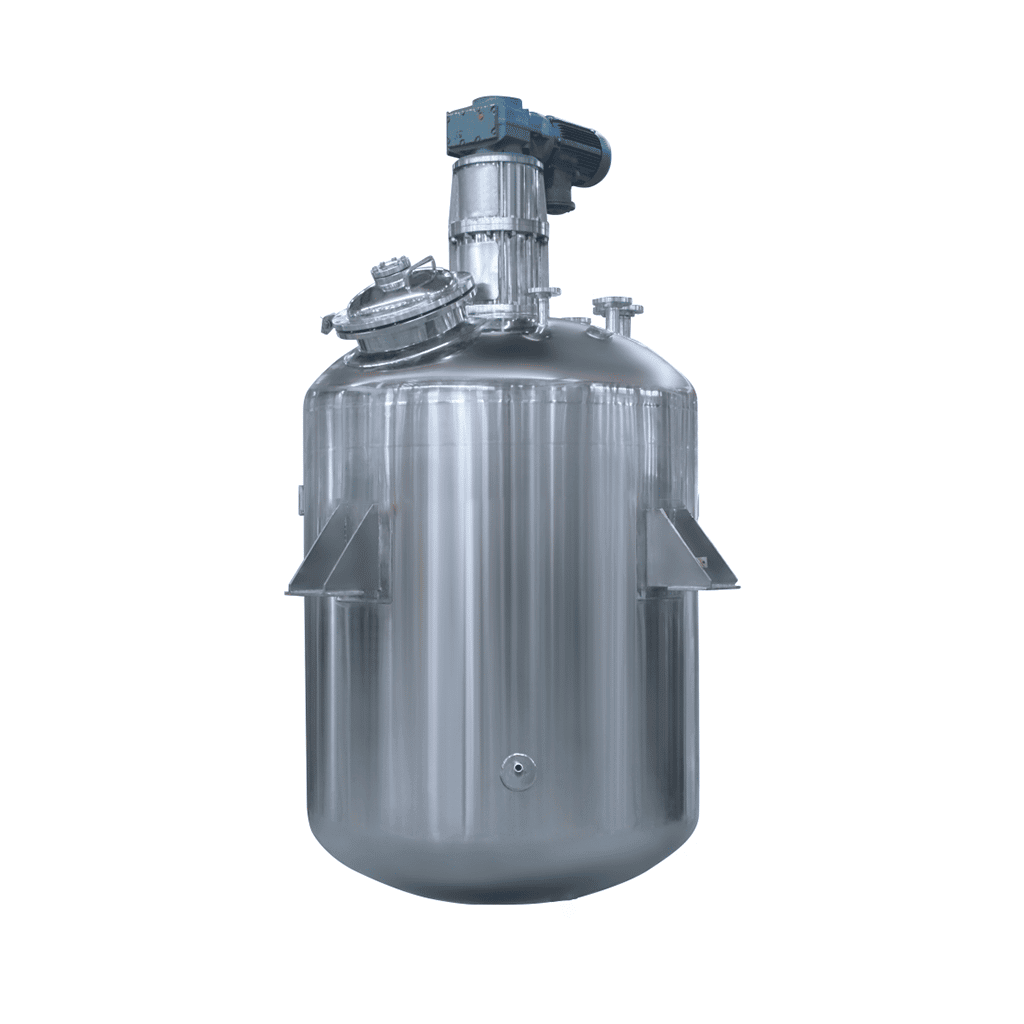
-24-1.jpg)
Stainless Steel Reactor
Stainless Steel Reactor: used in dairy products, sugar, beverages, and other fields
Material
stainless steel (316, 304)
Capacity (L)
10-10000+
Mixing system
anchor, paddle, frame and others
Heating system
electric heating, oil heating and others
A stainless steel reactor is a stainless steel container equipment. The stainless steel reactor consists of a kettle body, a kettle lid, a stirrer, a jacket, a bracket, a transmission device, a shaft seal device, etc. Materials and openings can be made according to user needs and process requirements. Stainless steel reactors are mainly used for stirring, homogenizing, and mixing storage of dairy products, sugar, beverages, food, and various pharmaceuticals.
Request a quoteThe 316L grade stainless steel reactors are widely used in the research of production users such as petroleum, chemicals, rubber, pesticides, dyes, medicine, food, etc, and in various scientific research and experimental projects. It is a container used to complete hydrolysis, neutralization, crystallization, distillation, evaporation, storage, hydrogenation, hydrocarbonization, polymerization, condensation, heating and mixing, constant temperature reaction, and other processes. From the initial feed to reaction to discharge, the preset reaction steps can be completed with a high degree of automation, and important parameters such as temperature, pressure, mechanical control, and reactant concentration can be strictly controlled during the reaction process.
316L-grade stainless steel reactors must be processed, tested, and trial-run in strict accordance with corresponding standards during production. According to different production processes, operating conditions, etc., the prices of 316L grade stainless steel reactors are also different. The design structure and parameters of 316L-grade stainless steel reactors are different, that is, the structural styles of 316L-grade stainless steel reactors are also different, and they are non-standard container equipment.
-24-1024x1024.jpg)
Factors affecting the price of 316L-grade stainless steel reactor
1. Production process: 316L-grade stainless steel reactor can be designed and customized according to the production process of the material
2. Material selection: Stainless steel reactor materials generally include carbon manganese steel, stainless steel 304, stainless steel 316L, zirconium, nickel-based (Hastelloy, Monel) alloy, etc. It can be selected according to user needs, and prices vary with different materials.
3. Selection of accessories: Choose strong magnetic coupling, sealing, stirring device, and other accessories according to user needs.
4. Selection of motor: working pressure in the tank, motor, and speed requirements. The choice of thickness of the 316L-grade stainless steel reactor steel plate and the difference in motor power account for a considerable proportion of the price.
5. Selection of stirrer: The selection of a 316L-grade stainless steel reactor stirrer needs to be based on the viscosity of the material. Ordinary water-like materials only require paddle stirring. However, if the viscosity of the material is high, you need to choose anchor stirring, which requires strong stirring. If the material will solidify and adhere to the tank wall due to local high temperature, a frame-type mixer with a PTFE wall scraper will also need to be selected.
Maintenance of 316L-grade stainless steel reactor
The price of 316L-grade stainless steel reactors ranges from high to low, but the maintenance issues of 316L-grade stainless steel reactors naturally cannot be different depending on the price. Maintenance issues should receive the same attention, as follows:
1. First of all, always pay attention to the working conditions of the 316L-grade stainless steel reactor and reducer.
2. Regular inspections of safety valves, pressure gauges, thermometers, distillation holes, electric heating rods, electrical instruments, etc. on the jacket and pot lid should be carried out.
3. The electric heating medium oil should be replaced every six months. If the reducer lubricating oil is insufficient, it should be replenished immediately.
4. When the 316L-grade stainless steel reactor is not in use, be sure to thoroughly clean the inner and outer walls of the container with warm water, and scrub the pot body frequently to keep the exterior clean and the inner tank bright to ensure durability.
316L-grade stainless steel reactor is a stainless steel container with physical or chemical reactions. Through the structural design and parameter configuration of the container, it can realize the heating, evaporation, cooling, and low-speed mixing functions required by the process. At the same time, the pressure requirements during the reaction process also have different design requirements for the vessel. The price of a 316L-grade stainless steel reactor is affected by many factors. It is said that you get what you pay for. First of all, you must understand its price components and choose a suitable 316L-grade stainless steel reactor. In addition, you must pay attention to the maintenance of the 316L-grade stainless steel reactor after purchasing it.




